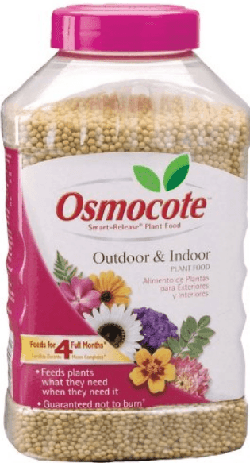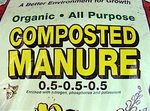Hydrangeas grow best if they are fertilized once or twice in the summer. Although some authorities recommend special fertilizer mixes to get the maximum results, hydrangeas do amazingly well with a more relaxed approach.

Either chemical fertilizers or organic matter can be used successfully. Since an organic method of applying manure and/or compost around the roots produces excellent results and also improves the condition of the soil, this would be an excellent first line of attack. Organic additions to the soil can also be combined with a shot of chemical fertilizer for maximum effect.
If chemical fertilizers are used, applying a slow-release, balanced fertilizer once a year is probably the simplest solution. There are many slow-release fertilizers on the market. If you can find a fertilizer formulated for shrubs and trees, this fertilizer would work well on hydrangeas. If Osmocote is used, the granules MUST be covered with soil for the fertilizer to release properly.
However, slow-release is certainly not the only way to fertilize hydrangeas. A less expensive fast release fertilizer such as a 10-10-10 will work just as well if applied twice during the summer. If you are looking for a fertilizing routine tailored to your specific conditions, a soil sample should be taken and the fertilizer and trace elements matched to the needs of your soil.
Don't fertilize after August. Fall is the time for hydrangeas to begin preparing for dormancy. Fertilizing at this time may stimulate new growth that will be too tender to withstand the winter. In the South, a late May application and another in July would be about right. More northern areas may wish to fertilize only once in June or July.

The amount of chemical fertilizer used per plant will vary with the size of the plant and its root system. (Use less fertilizer for hydrangeas in a container.) Over-fertilization can be much more detrimental than under-fertilization. "Fertilizer burn" can occur when too much fertilizer is applied, resulting in a drying out of the roots and damage or even death of the hydrangea. It is much, much better to err on the side of too little fertilizer than too much. When roots are burned, the first sign is often scorched looking leaves. If overfertilization is severe, the plant may just wilt and die.
The amount of chemical fertilizer used per plant will vary with the size of the plant and its root system. (Use less fertilizer for hydrangeas in a container.) Over-fertilization can be much more detrimental than under-fertilization. "Fertilizer burn" can occur when too much fertilizer is applied, resulting in a drying out of the roots and damage or even death of the hydrangea.
It is much better to err on the side of too little fertilizer than too much. When roots are burned, the first sign is often scorched-looking leaves. If over-fertilization is severe, the plant may just wilt and die.
If a liquid fertilizer is used, it should be applied every month for both plants in pots and in the ground.
Never fertilize a plant with a chemical fertilizer if the plant looks sick or wilted. If a plant is struggling due to a disease or root problems, the fertilizer will only add stress to its life. Try to cure the problem before adding fertilizer.
 Fertilizing Hydrangeas Organically
Fertilizing Hydrangeas Organically
For an organic approach, many gardeners use commercial manure on the soil around hydrangeas. Excellent results have been reported by visitors to this site after using composted manure. Commercial manure or compost can be applied yearly around the base of the hydrangea. As with chemical fertilizers, do not apply it right next to the trunk or stems emerging from the ground.
Myths About Fertilizing Hydrangeas
Fertilizing a healthy hydrangea will not cause it to bloom. If a hydrangea will not bloom year after year, there is a problem unrelated to the fertilizer. There are several reasons why hydrangeas won't bloom, but a lack of fertilizer is not one of them. This is unfortunate since we would all like a simple solution to the common problem of hydrangeas failing to bloom.
Fertilizer will not change the color of the blooms. It's possible that extra ingredients added to fertilizers might change the color, but the fertilizer itself doesn't have this power.
Here is more information on how to change the color of hydrangeas.
 When leaves on a plant turn yellow WITH green veins (as in the image on the right which is from the Texas A & M Aggie site), regular fertilizer will not improve the color. This condition usually means the plant needs iron. Yellow leaves and green veins are often the result of iron chlorosis. This is the result of either an iron deficiency or iron unavailable for plant uptake.
When leaves on a plant turn yellow WITH green veins (as in the image on the right which is from the Texas A & M Aggie site), regular fertilizer will not improve the color. This condition usually means the plant needs iron. Yellow leaves and green veins are often the result of iron chlorosis. This is the result of either an iron deficiency or iron unavailable for plant uptake.
Liquid iron is inexpensive and can easily be poured or sprayed on the plant. (Any brand will do) The results are often quite dramatic.
 |
Author Judith King - Last Updated 5-03-2024 |
